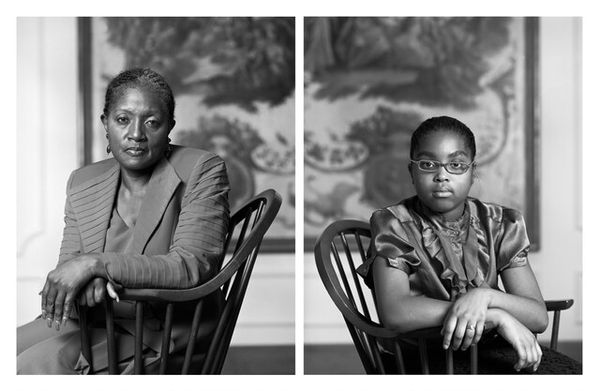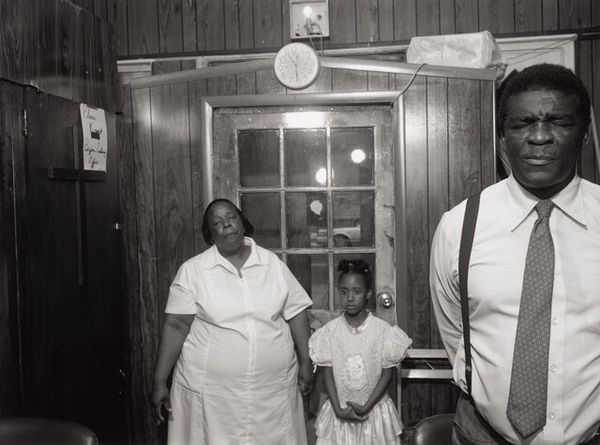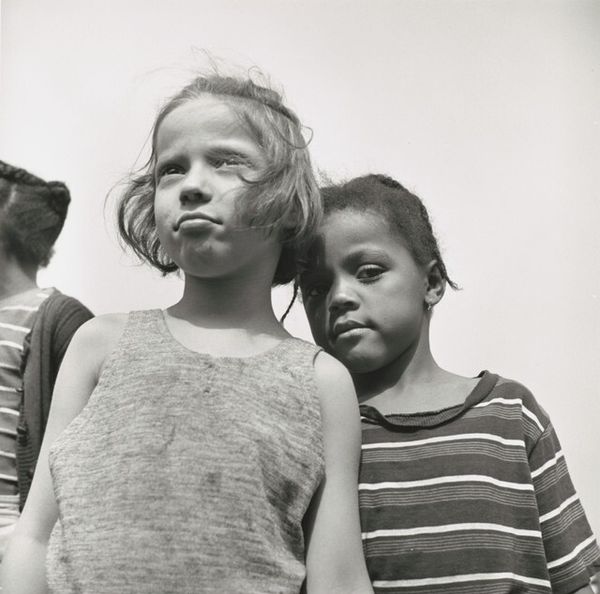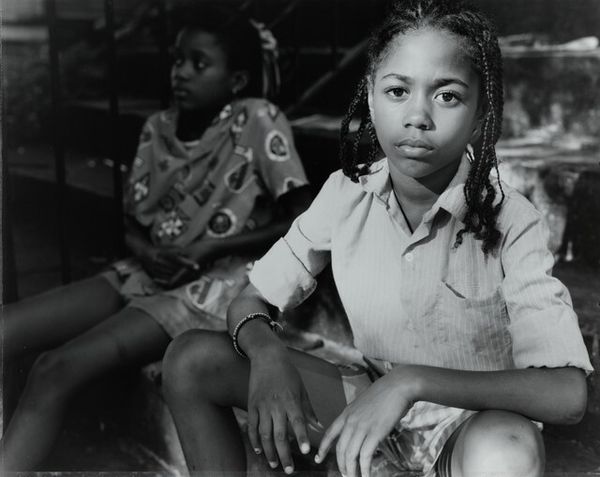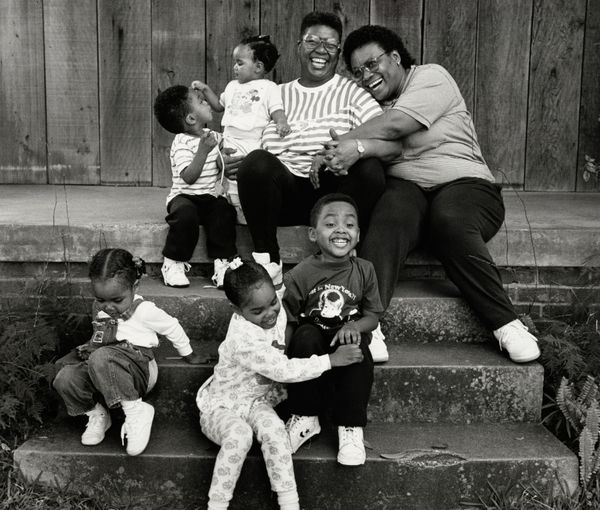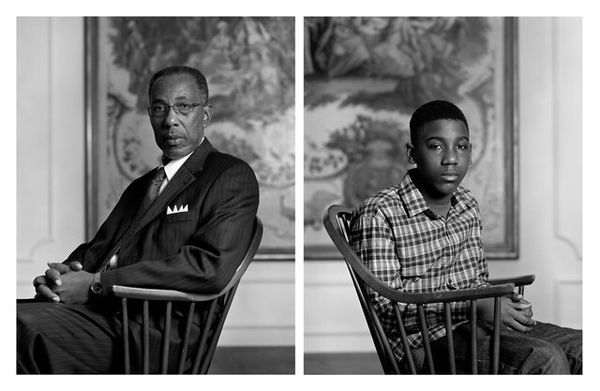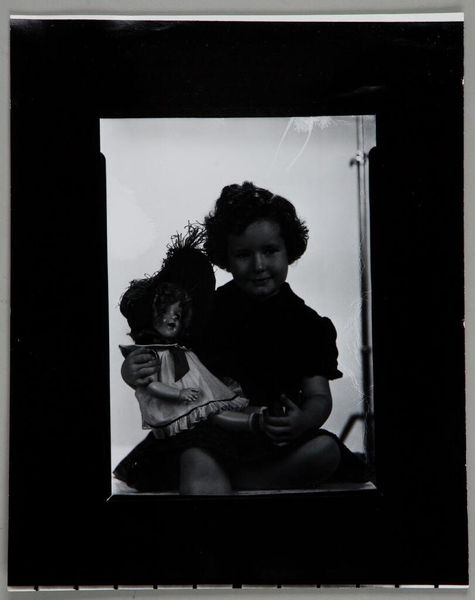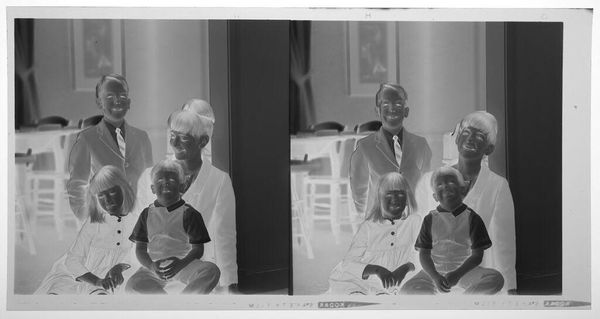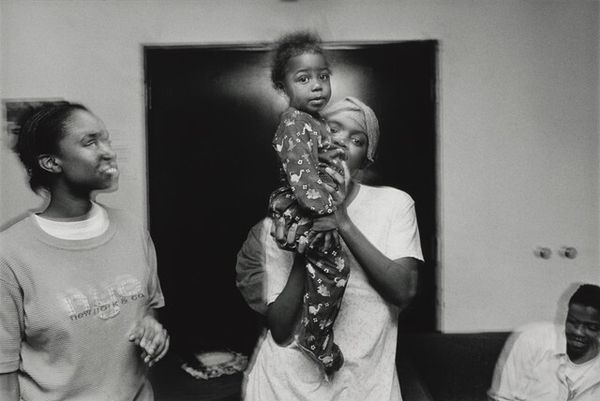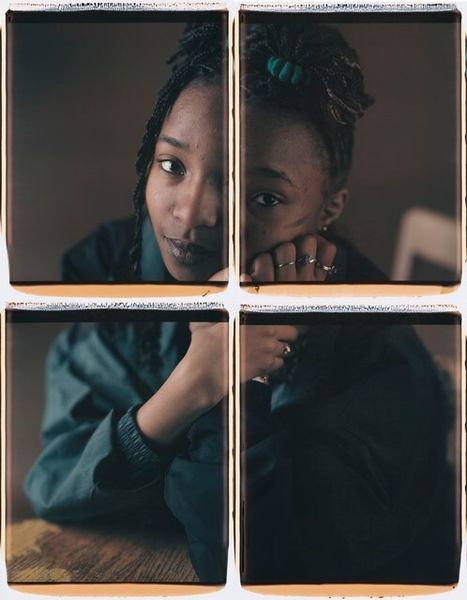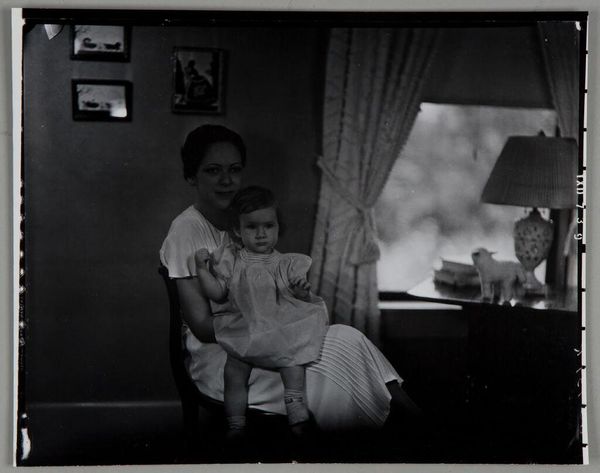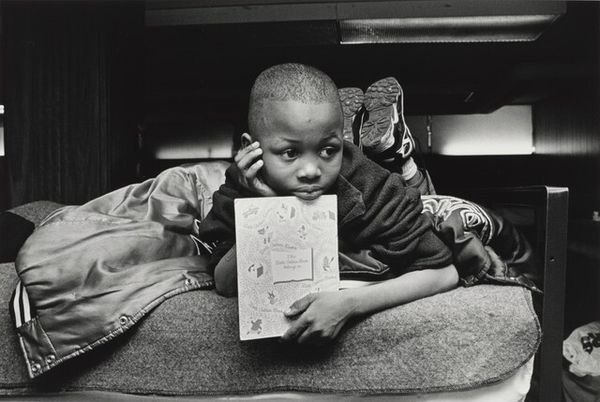
photography
#
portrait
#
contemporary
#
photography
#
group-portraits
#
monochrome
#
realism
#
monochrome
Dimensions: image (each): 91 × 71 cm (35 13/16 × 27 15/16 in.) framed (each): 104 × 83.7 × 4.5 cm (40 15/16 × 32 15/16 × 1 3/4 in.) overall: 104 × 167.4 × 4.5 cm (40 15/16 × 65 7/8 × 1 3/4 in.)
Copyright: National Gallery of Art: CC0 1.0
Curator: Dawoud Bey’s diptych, "Mary Parker and Caela Cowan" from 2012 presents us with two striking portraits in monochrome. Editor: The grain is prominent; it emphasizes the raw materiality of the photograph itself, the silver halides suspended in gelatin on that paper. Curator: Exactly. Bey often uses diptychs to invite comparisons and connections. Here, we see two individuals, presumably across generations, seated in what appears to be a church pew. Each face carries its own story, yet the shared setting suggests a deeper, collective narrative. The choice of monochrome serves, for me, as a poignant signifier of memory, history, and legacy. It feels very intentional. Editor: Intentional for sure, but I'm thinking of the practical considerations, too. Working in monochrome streamlines the darkroom process, allowing Bey to focus on capturing those very expressions in detail. Notice how the pew seems almost worn? You can almost feel the presence of countless bodies that sat on that bench. It really does seem to connect with the photographic process, as it also requires many hours sitting, exposed and in the dark to create something tangible. Curator: I see your point about process and labor, definitely. Looking at these women in the pews, you get the sense of sanctuary, the role the church played for generations. The lighting from behind them suggests something holy or divine is watching from above. Bey understands these codes; that intergenerational connection through space really carries so much emotional weight. Editor: Agreed, it brings that spiritual space down to earth a bit. Curator: How so? Editor: Thinking about how that pew, it's weight and age, anchors their shared history, in the photo. Curator: So well put! It reminds me how history is woven in the everyday objects that we inhabit, what they represent, what emotions are conjured when experiencing that space, that object. Editor: It seems like the material constraints, monochrome palette, contribute so powerfully to the mood. The textures—of wood, skin, and fabric are rendered in a really immediate and striking way. Curator: Definitely a remarkable consideration of space and representation. Editor: It has provided some interesting viewpoints about form and symbol.
Comments
No comments
Be the first to comment and join the conversation on the ultimate creative platform.
